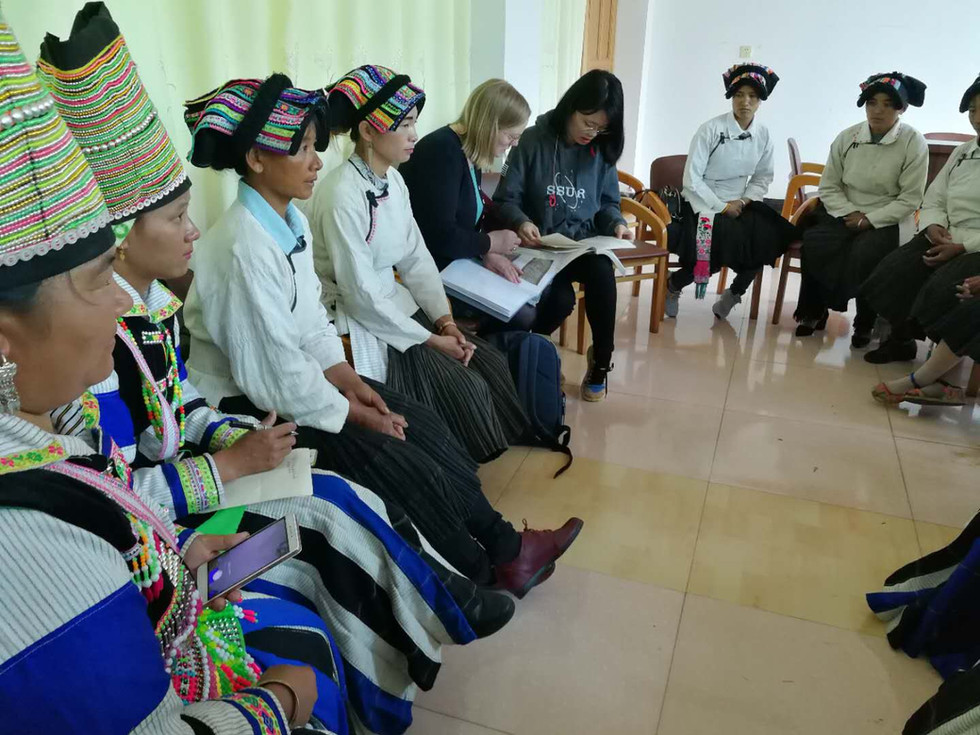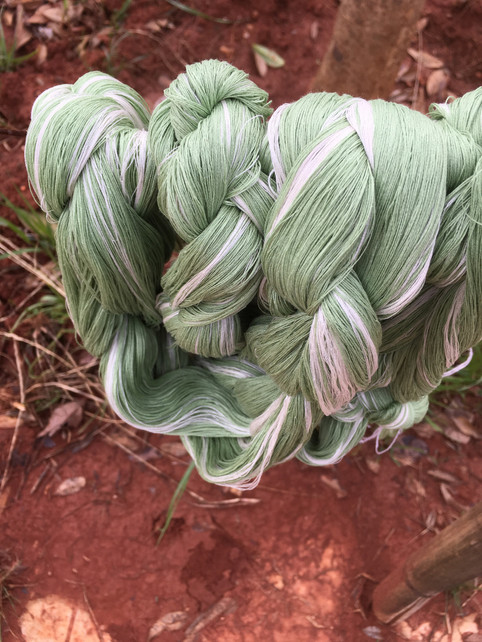Create Your First Project
Start adding your projects to your portfolio. Click on "Manage Projects" to get started
Weaving with the Lisu and Yi communities of Yunnan Province, China 2018.
Compared to my trip to China in 2014, this visit was very different; I didn't get any additional information about the looms I would be teaching on but I was sent a very special yarn, specific to the women's communities, that features highly in their traditional costumes. Locally know as Fire Grass, Latin name Gerbera Delavayi, this plant fibre was like nothing I have ever come across before. A soft, peach-like fibre is stripped from the leaves, dried and gently twisted before being used in the weaving; this plant is not cultivated but grows in the mountains where the women have to forage. Sometimes they can gather lots of plants, other times not so much so the amount of yarn they have access to can differ greatly year to year.
While this fabric is incredibly important for their traditional costumes, the weaving itself is secondary to the other tasks of looking after their families, raising children and farming so they weave when time allows and often dress their looms with one, very long warp and work on it throughout the summer. The resulting fabric will then be sent to the local tailor or seamstress for making into the costumes.
The two communities both worked with Fire Grass yarn but, separated by valleys and not able to easily mix, their costumes developed very differently which you will see in the gallery of photos.
I was tasked with teaching a number of new weaves, twill, huck and Monk's belt which would feature in a number of new products so, potentially, the women could earn money from their weaving instead of all the fabric being used for the costumes. They had experienced problems with getting younger women involved with weaving because there was no incentive to weave; it's a very long, complicated process that requires dedication, time and patience and, unfortunately, the younger women weren't interested enough to invest the time required to gain the skill. It was hoped that monetising the process, more women would be persuaded to weave and ultimately pass on the skills to future generations; the women were very lucky to have the help of a local business woman who had marketing and other skills required in raising awareness in the women's new products.
I spent many weeks before the trip creating samples in cotton, hemp and Fire Grass along with the written notations to help the women archive and record their work; I had to go out on a limb a bit with this because, as usual, it was impossible to get any information about what I would encounter in China. I was totally unaware of the women's level of education and their ability to grasp and understand the way the patterns are recorded; I could have done all the written work and then find they were unable to decipher the method I used. However, I produced very careful notes, diagrams and photos of all my samples and methodology and hoped at least one woman from each community would understand and be able to teach the others at their leisure.
As the two communities lived in different areas, they came together in a local town where a building had been hired for our workshop; they brought all their looms and equipment with them. The first, practice warps were made in cotton so the women could get to grips with the new processes and not worry too much with making mistakes and errors. Like the group I met in 2014, these women were very experienced and were able to work on the basics like warping and dressing the looms without any interference from me, it was only when it can to the specifics of threading the looms for the new weaves that they needed instruction and , thankfully, they were able to follow my printed notations and diagrams.
They quickly completed the first warps and moved onto the product warps which were to be made in organic cotton, hand-spun hemp, both of which were hand-dyed and, of course, the Fire Grass. The Fire Grass is not strong enough to be used as warp so was combined with the other fibres as weft. The women worked on ranges of scarves, table runners and fabric to be used during tea ceremonies. The work was not without problems but the women were very resourceful and understood their materials and equipment so well that they were able to solve those problems quite easily. At the end of the workshop they had produced a fabulous array of products which, only a few months later, were entered in a competition from the World Craft's Council and they were lucky enough to win commendations for their work. Another successful workshop!


































































